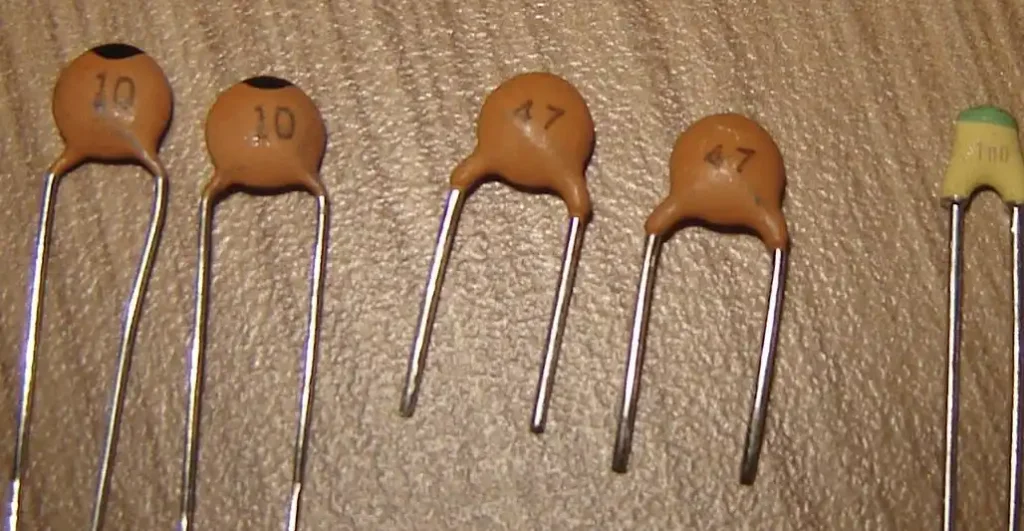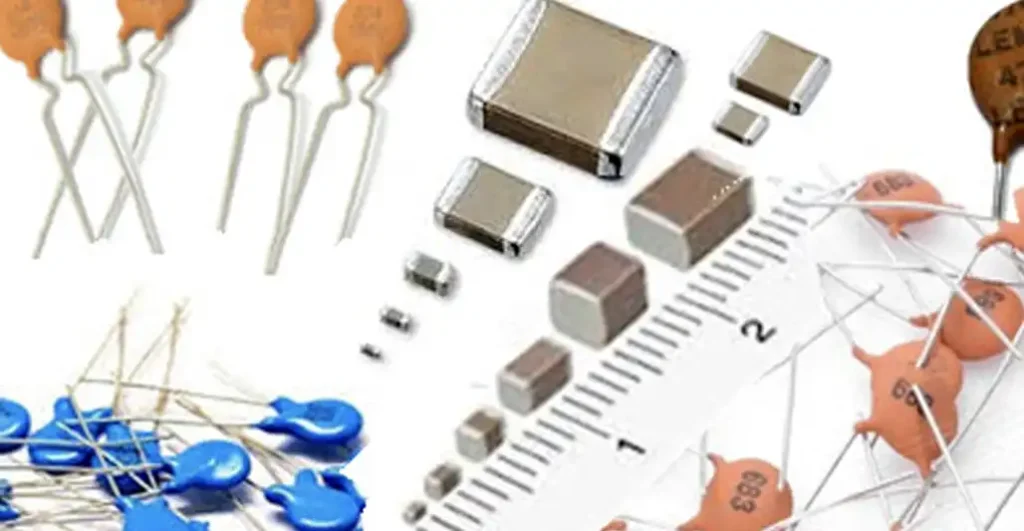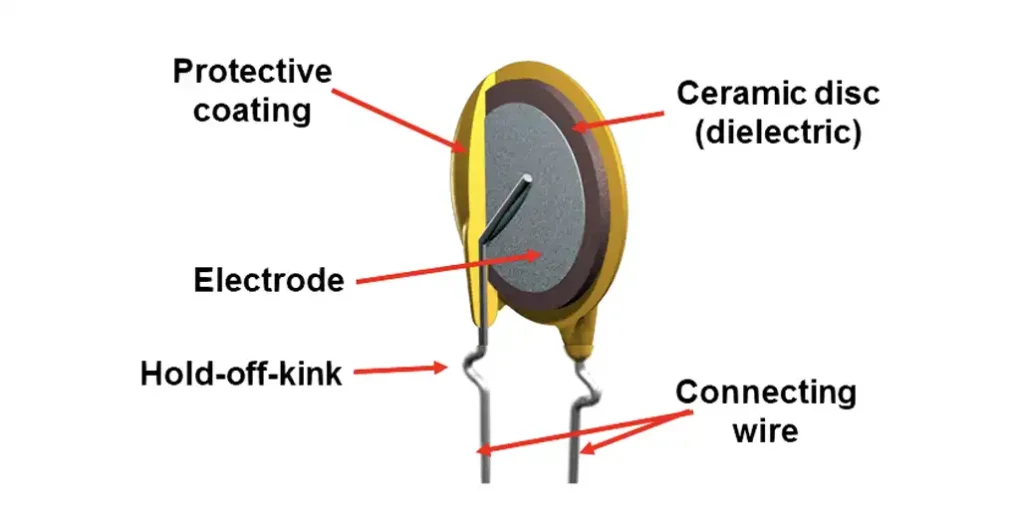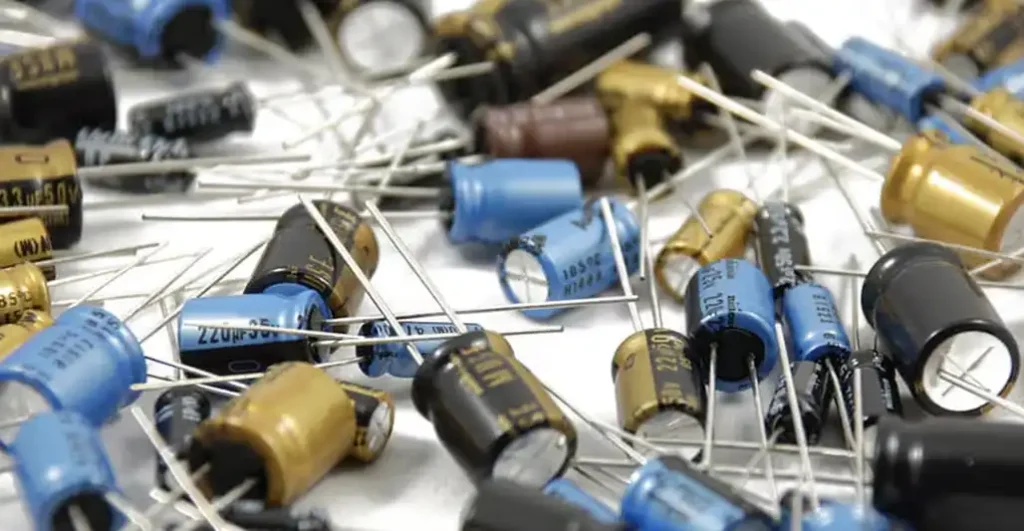Ceramic capacitors are small electronic components found in an array of devices and circuits, making them an essential part of modern technology. Their compact size, high capacitance, and excellent high-frequency performance contribute to their popularity in various applications.
In this article, we will explore the anatomy and inner workings of ceramic capacitors, shedding light on their functionality and key characteristics.
What Are Ceramic Capacitors

Ceramic capacitors belong to the family of passive electronic components. They consist of a ceramic material that acts as a dielectric sandwiched between two metal plates, known as electrodes.
This configuration enables ceramic capacitors to store electrical charge in the electric field formed between the electrodes while exhibiting capacitive behavior.
Types of Ceramic Capacitors

There are several types of ceramic capacitors available, each suited for different applications. The most common classification distinguishes ceramic capacitors into three classes: Class I, Class II, and Class III.
Class I Ceramic Capacitors
Class I ceramic capacitors are known for their high accuracy and stability but have a low capacitance value. They are primarily used in applications that require precise and reliable capacitors, such as in resonant or tuning circuits.
Class II Ceramic Capacitors
Class II ceramic capacitors offer a higher capacitance value compared to Class I capacitors. While sacrificing some accuracy and stability, Class II capacitors provide greater magnitude of capacitance, making them suitable for applications involving voltage smoothing, coupling, and bypassing.
Class III Ceramic Capacitors
Class III ceramic capacitors are specialized components designed for specific applications. They exhibit large values of capacitance but with reduced stability and an increased temperature coefficient. They find usage in devices like ignition systems and other high-temperature environments.
Construction and Components of Ceramic Capacitors
To understand how ceramic capacitors work, it’s crucial to examine their construction and internal components.
Dielectric Material
The dielectric material used in ceramic capacitors defines their electrical characteristics. Common dielectric materials include barium titanate (BaTiO3), lead zirconate titanate (PZT), and others. Each material contributes to the capacitor’s unique properties, such as temperature stability, capacitance value, and voltage rating.
Electrodes
Ceramic capacitors have two electrodes that provide the conductive connection required for charging and discharging processes. These electrodes are usually made of silver, palladium-silver, or other conductive materials, and they ensure a strong electrical connection with the dielectric material.
Terminal Connections
The terminal connections enable external electrical connections to the ceramic capacitor. Typically made of metals like nickel or silver, the terminals allow for easy integration into circuits and devices.
How Ceramic Capacitors Work

Ceramic capacitors operate on the principle of charge storage in an electric field formed by the dielectric material. Understanding the charging and discharging processes and the interaction between voltage and capacitance is key to comprehending their functionality.
Charging and Discharging Processes
When a ceramic capacitor is connected to a power source, it starts to charge. As voltage is applied across its terminals, electrons accumulate on one electrode and create a negative charge, while the other electrode experiences a positive charge. This charge separation results in the creation of an electric field within the dielectric material, storing electrical energy.
When the power source is disconnected, the capacitor begins to discharge. The accumulated charge flows back through the circuit, releasing stored energy until equilibrium is reached. This cyclic charging and discharging behavior is fundamental to the operation of ceramic capacitors.
Capacitance and Voltage Rating
Capacitance is a crucial parameter of ceramic capacitors, representing their ability to store electrical charge. It determines the amount of charge a capacitor can hold for a given voltage. Capacitance is measured in farads (F), but ceramic capacitors typically have capacitance values ranging from picofarads (pF) to microfarads (μF).
Voltage rating is equally important as it indicates the maximum safe voltage that can be applied across a ceramic capacitor without causing electrical breakdown or damage. Exceeding the voltage rating may compromise the integrity of the dielectric material, resulting in catastrophic failure.
Applications of Ceramic Capacitors

Ceramic capacitors find extensive applications across various industries and electronic devices. Their unique characteristics make them suitable for a wide range of purposes.
Electronics and Electrical Circuits
Ceramic capacitors are widely used in electronic circuits for tasks such as coupling, decoupling, and filtering. They help stabilize voltage levels, reduce noise, and improve signal quality.
Power Supply Decoupling
In power supply circuits, ceramic capacitors act as decoupling capacitors, preventing unwanted noise and voltage fluctuations from affecting sensitive components. These capacitors provide a stable source of power, ensuring reliable operation.
Filtering and Noise Reduction
Ceramic capacitors are valuable components for high-frequency noise filtering due to their low equivalent series resistance (ESR) and good high-frequency performance. They effectively suppress noise and maintain signal integrity.
Timing and Oscillation Circuits
Due to their stability and precision, ceramic capacitors are commonly utilized in timing and oscillation circuits. They contribute to accurate timing and frequency generation in devices such as oscillators and timers.
Advantages of Ceramic Capacitors
Ceramic capacitors offer several advantages that have contributed to their popularity and widespread use.
Small Size and High Capacitance
One of the significant advantages of ceramic capacitors is their compact size. They can store a substantial amount of charge in a small package, making them ideal for miniaturized devices where space is a constraint.
Low Equivalent Series Resistance (ESR)
Ceramic capacitors exhibit low ESR, which means they have minimal resistance to the flow of electrical current. This characteristic enhances their efficiency and makes them suitable for high-frequency applications.
Good High-Frequency Performance
Ceramic capacitors have excellent high-frequency performance, allowing them to handle rapid changes in voltage and maintain stability. This quality makes them indispensable in modern electronics that operate at high frequencies.
Limitations of Ceramic Capacitors
While ceramic capacitors offer numerous advantages, they also come with some limitations that need to be taken into consideration.
Limited Voltage Rating
Ceramic capacitors generally have lower voltage ratings compared to other types of capacitors. This limitation restricts their usage in high-voltage applications, where alternative capacitor types may be more suitable.
Piezoelectric Effect
Ceramic materials used in capacitors can exhibit the piezoelectric effect, which means they can generate an electrical charge when subjected to mechanical stress. This effect can cause unwanted noise or interference in certain circuits and must be carefully managed.
Temperature Dependencies
The capacitance value of ceramic capacitors can be affected by temperature changes. It is necessary to consider the temperature coefficients specified by manufacturers to ensure proper functioning across varying temperature conditions.
Choosing the Right Ceramic Capacitor
Selecting the appropriate ceramic capacitor for a specific application involves considering multiple factors.
Application Specific Requirements
Understanding the requirements of the application is crucial. Factors such as frequency range, capacitance value, voltage rating, and stability should be taken into account to ensure optimal performance.
Ceramic Capacitor Class Selection
Choosing the right ceramic capacitor class is important. Class I capacitors offer higher stability but lower capacitance values, while Class II capacitors provide higher capacitance but with reduced stability. Class III capacitors cater to specialized applications with large capacitance but reduced stability.
Handling and Mounting Ceramic Capacitors
Proper handling and mounting of ceramic capacitors are essential to maintain their functionality and prevent damage.
Electrostatic Discharge (ESD) Precautions
Ceramic capacitors are susceptible to damage from electrostatic discharge. Therefore, it is crucial to implement ESD prevention measures, such as using grounded workstations and grounding oneself before handling these components.
Mechanical Stress Avoidance
Ceramic capacitors can be sensitive to mechanical stress. Care should be taken during installation and operation to avoid subjecting them to excessive pressure or vibration, which can lead to cracking or failure.
FAQs About Ceramic Capacitors
Here are some frequently asked questions about ceramic capacitors:
Can I use a ceramic capacitor in a high-voltage application?
Ceramic capacitors generally have lower voltage ratings compared to other types of capacitors. If you require a high-voltage application, it is recommended to explore capacitor options specifically designed for high-voltage scenarios.
Are all ceramic capacitors temperature-dependent?
Yes, ceramic capacitors exhibit temperature dependencies that can affect their capacitance values. Manufacturers provide temperature coefficients, which should be taken into account when selecting a ceramic capacitor for a particular temperature range.
Can ceramic capacitors handle high-frequency signals?
Yes, ceramic capacitors are well-suited for high-frequency signals due to their low ESR and good high-frequency performance. They exhibit excellent response to rapid changes in voltage, making them an ideal choice for high-frequency applications.
Can I replace a Class I capacitor with a Class II capacitor?
While Class I and Class II ceramic capacitors have different characteristics, it may be possible to replace a Class I capacitor with a Class II capacitor if the specific application allows for some tolerance in accuracy and stability. However, it is essential to consider the potential impact on overall circuit performance.
How do I prevent damage from electrostatic discharge when handling ceramic capacitors?
To prevent damage from electrostatic discharge (ESD), it is crucial to follow ESD precautions. Ensure your work environment is grounded, use grounded workstations, and consider using an anti-static wrist strap. By grounding yourself and implementing appropriate measures, you can minimize the risk of ESD-related damage.
Conclusion
Ceramic capacitors are vital components in today’s electronic devices and electrical circuits. Their ability to store electrical charge, small size, and high-frequency performance make them indispensable in various applications.
Understanding how ceramic capacitors work, their construction, and their characteristics allows us to make informed decisions when selecting and utilizing them. By taking into account their advantages, limitations, and proper handling techniques, we can harness their full potential in our designs and ensure optimal performance.
In conclusion, ceramic capacitors serve as integral parts of our technology-driven world, contributing to the smooth operation of countless electronic devices and circuits. Through their efficient charge storage and release mechanisms, these small wonders of engineering continue to empower innovation and advancement in various industries.